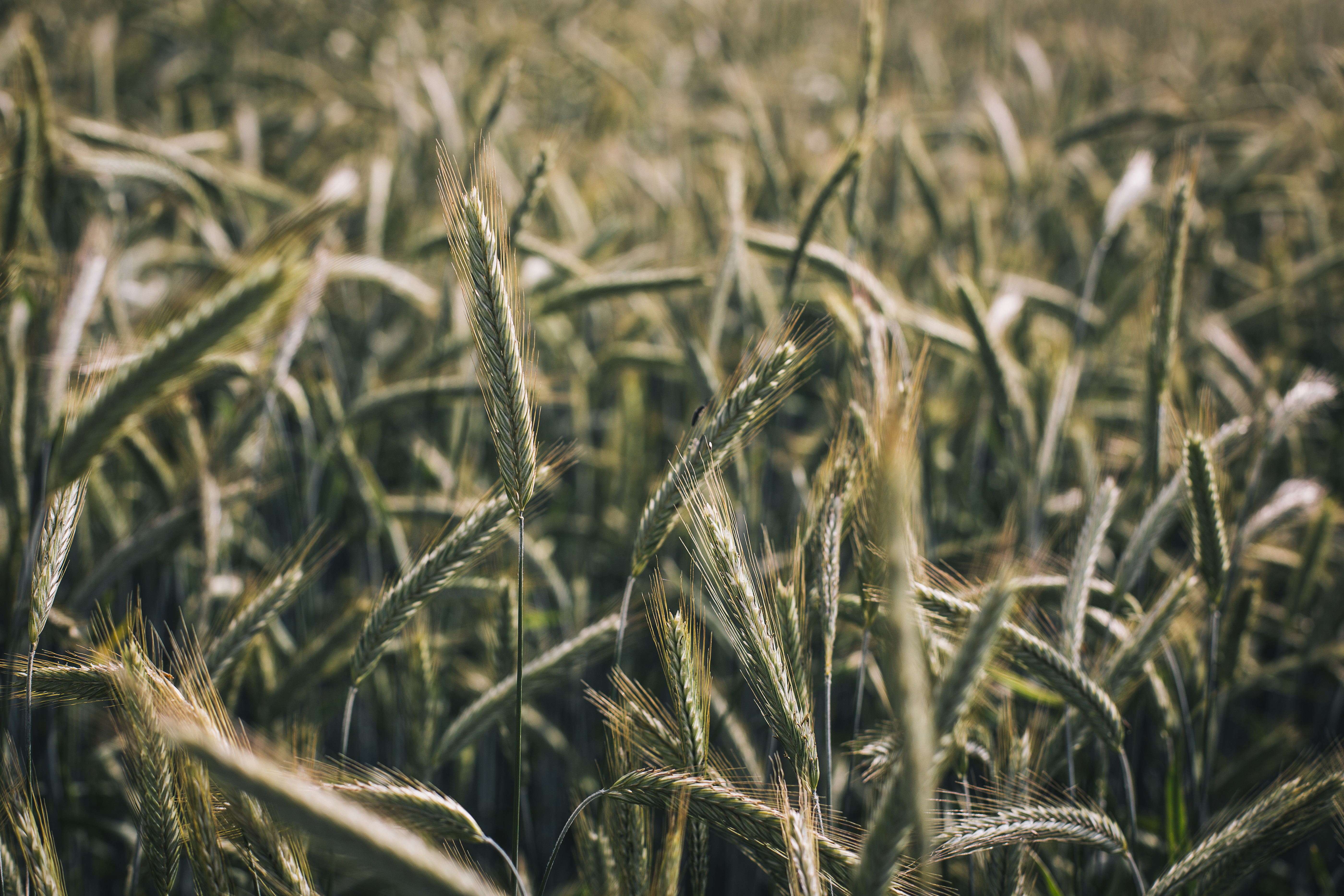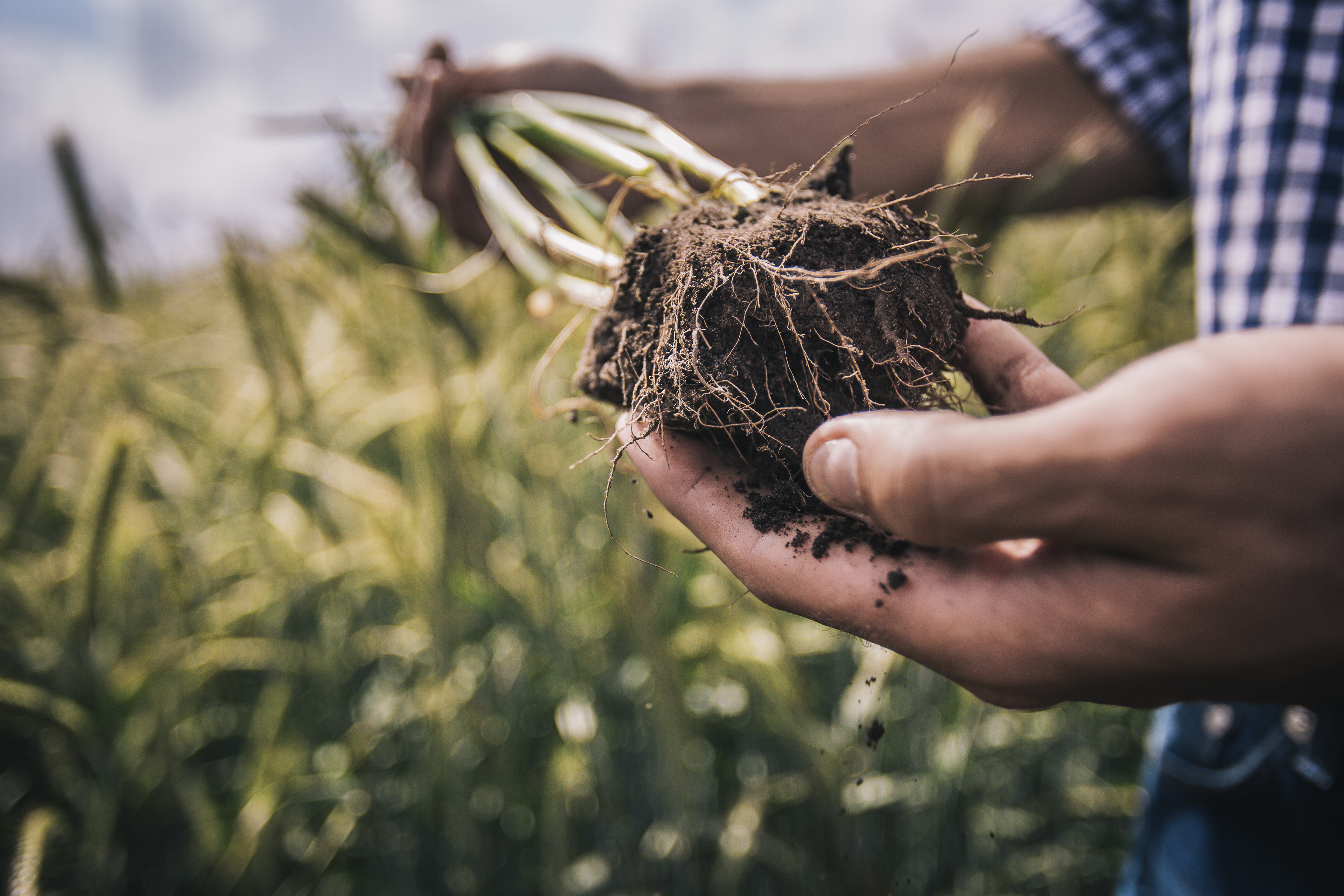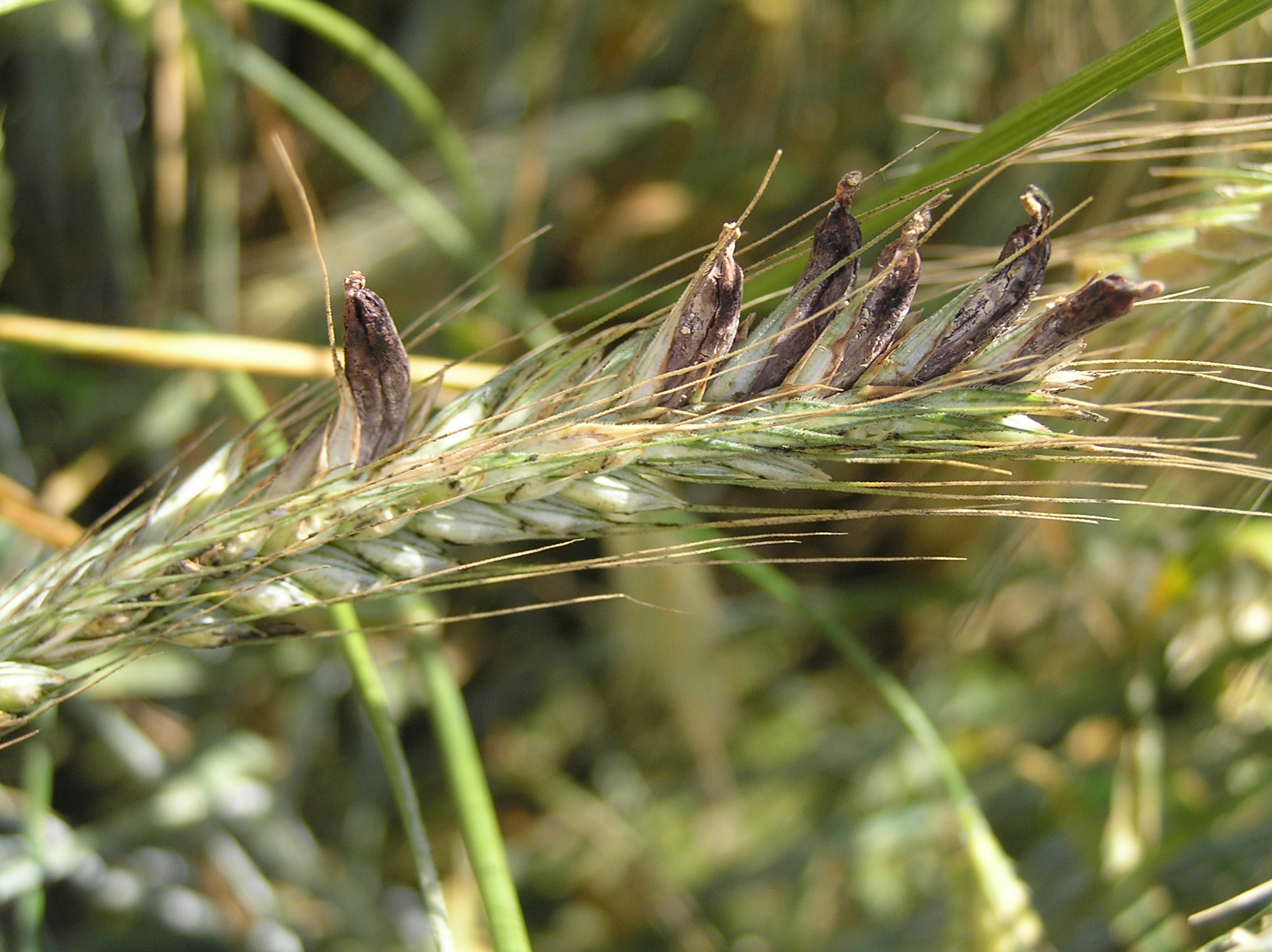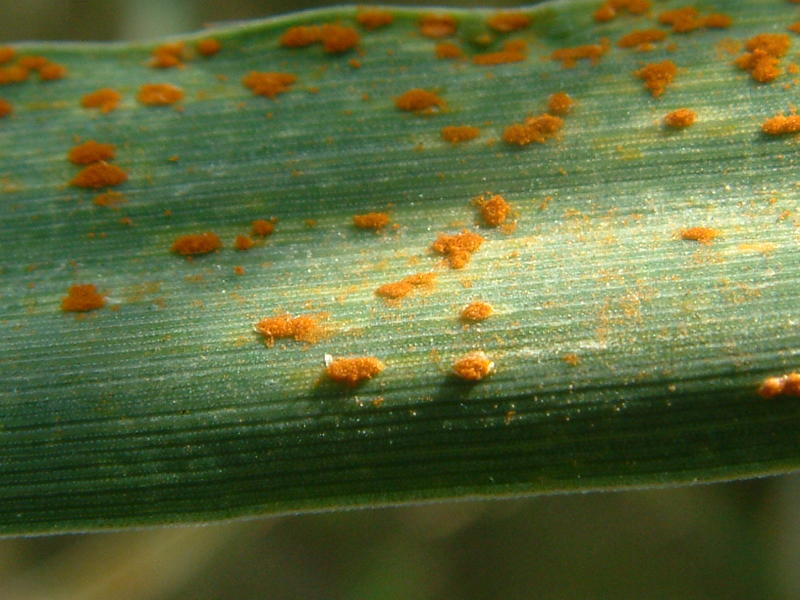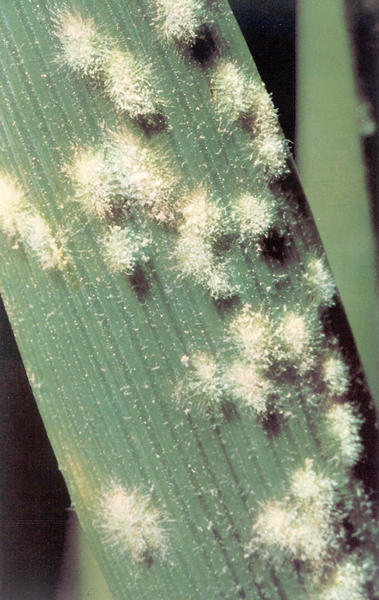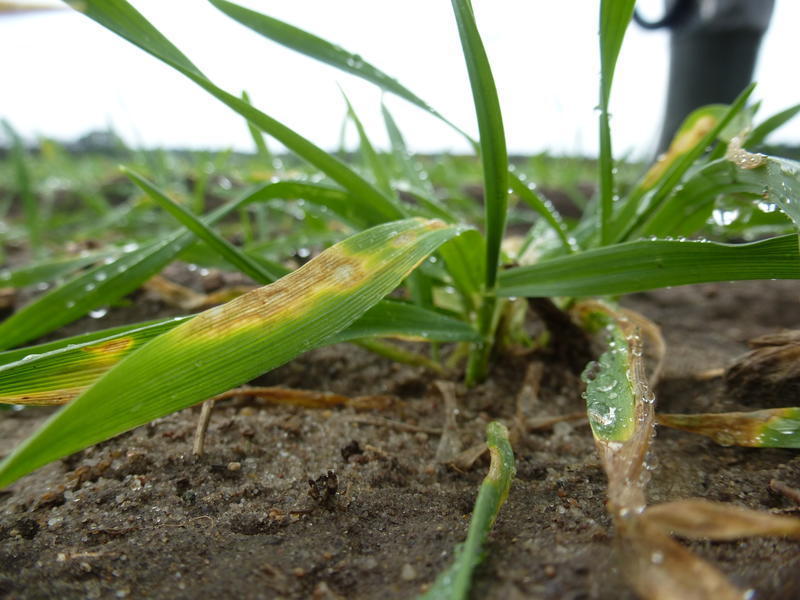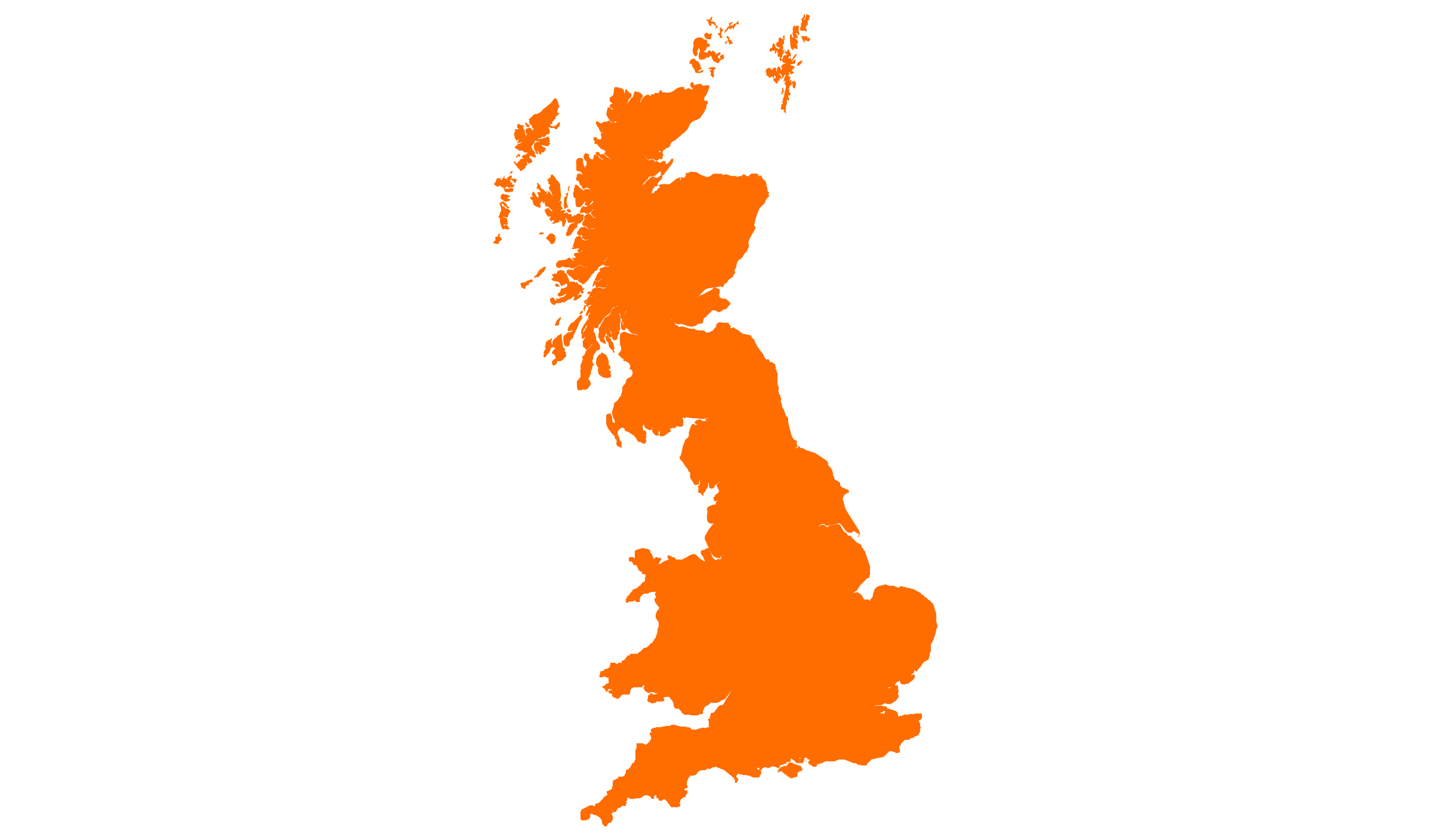Microdochium nivale is one of the important seedling parasites in winter rye.
(Microdochium nivale)
Meaning
The snow mould pathogen (Microdochium nivale) is one of the important seedling parasites in winter rye. Under specific conditions, at high atmospheric humidity and CO2 accumulation under a persistent snow cover, Microdochium nivale can lead to a parasitic winter damage and make a transition in the area necessary.
Main symptoms
Initial damage is visible already in the autumn. Patchy emergence of rye can sometimes be caused by infestation by the snow mould organism. Infected, corkscrew-like curved seedlings cannot penetrate the soil. The disease is most easily recognisable after snowmelt. Dead plants lie tight to the soil and are coated with a whitish-pink fungal mycelium. Blackish-brown fruiting bodies are visible on the affected tissue. Microdochium nivale can also attack ears, leaf axils and leaf blades. Scattered, large, oval spots are typical. Spread within the stand takes place by mycelial growth under the snow cover or with conidia spores and ascospores, which form on the dead plants and are transferred to healthy plants by wind, rain or insects. Microdochium nivale - seed-borne or straw-borne - is mainly supported in exuberantly developed rye stands at high humidity and temperatures close to the freezing point. Long snow coverage of non-frozen soil is especially favourable for the development of the fungus. At the base of the crown, the pathogen spreads from the seed or the soil, through the crown root.
- Good working of harvest residues of cereals and grasses into the soil (couch grass control)
- Time-appropriate, not too early sowing
- No application of post-emergence herbicides too late in the fall, choose better tolerated and more site-appropriate agents
- No cereal-after-cereal or cereal-after grass cultivation at sites at risk for snow mould
- Timely N-fertilisation in springtime
Infestation of seedlings can be reduced by seed treatment (seed dressing). Infestation of leaves and ears can be controlled effectively by targeted fungicidal measures. Breakup is only necessary in the case of plant densities of less than 40% of the target plant density or in the case of large gaps in plant density.
